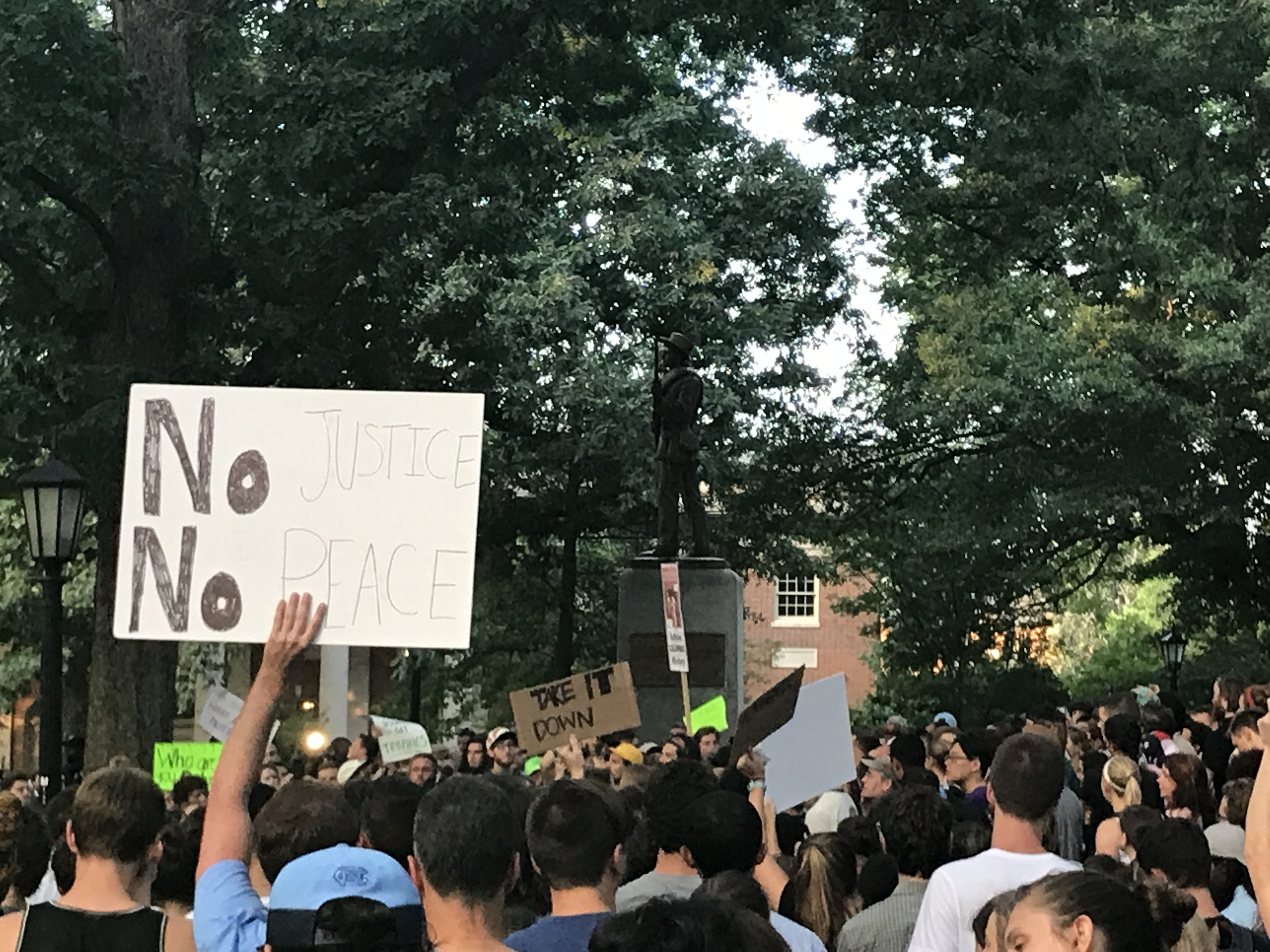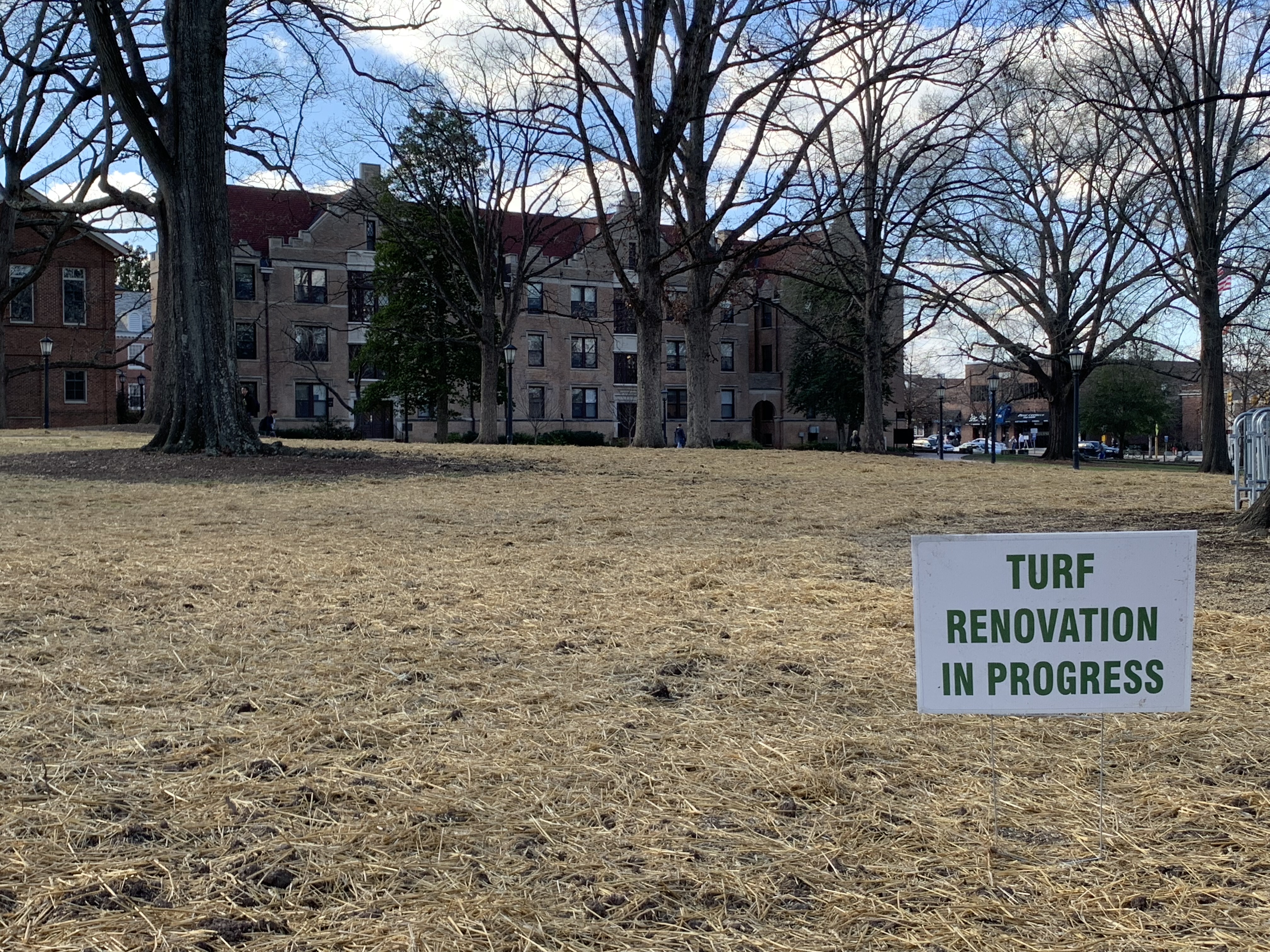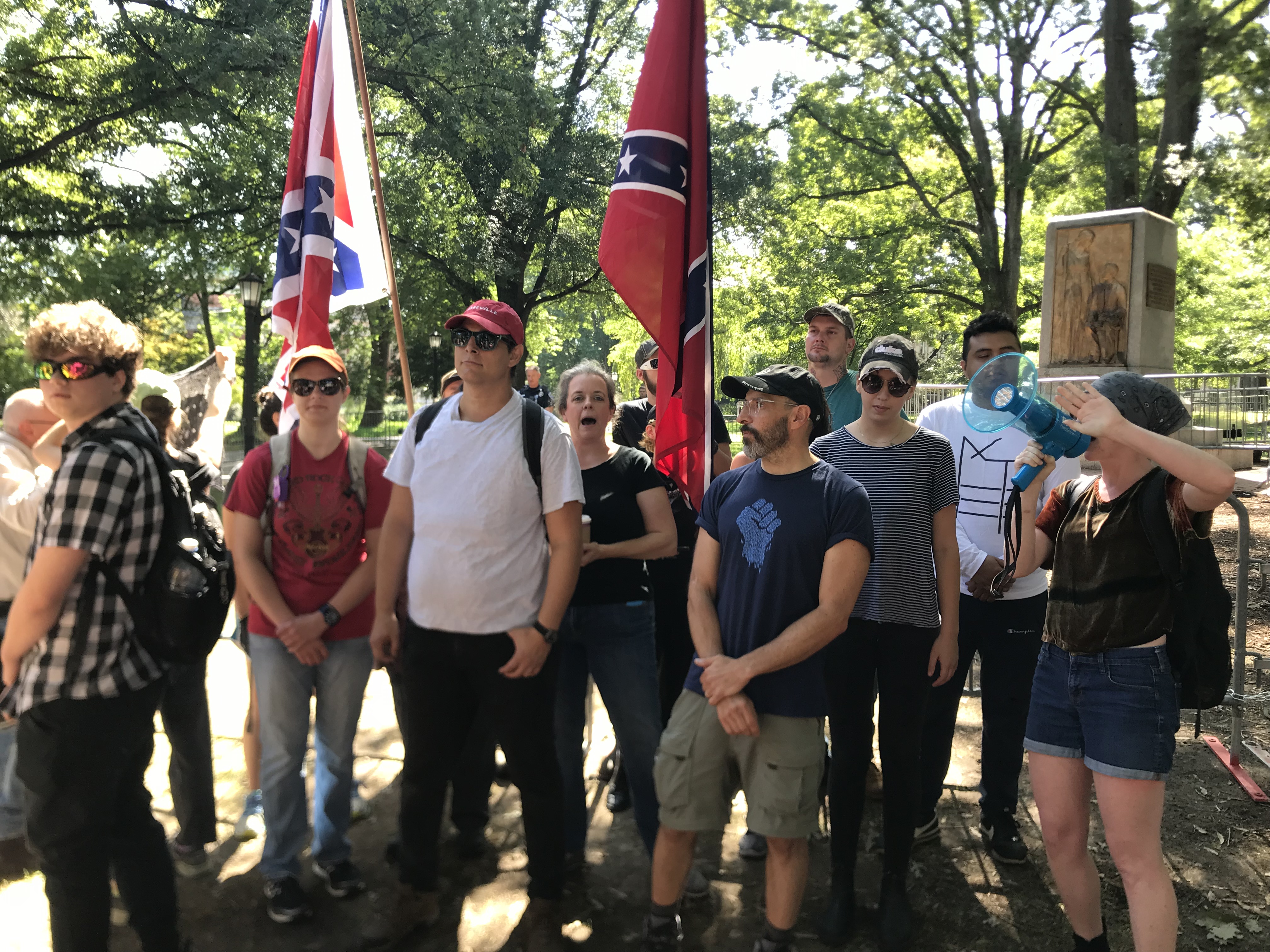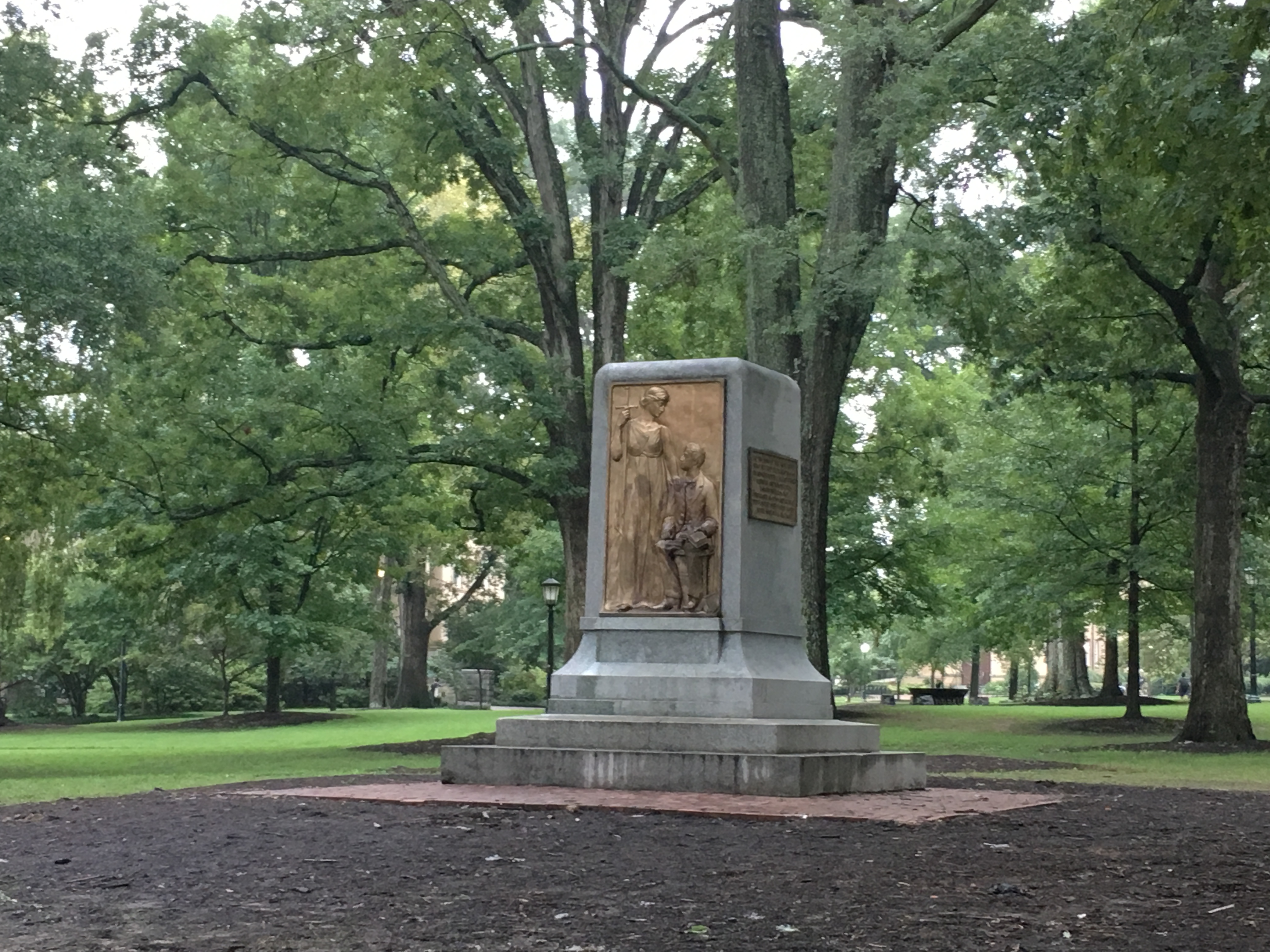Cleanup was underway in Chapel Hill and Durham, on Tuesday, after memorials to the confederacy in each town were spray painted.
Spectators gathered as cleaning crews power washed away the words “Black Lives Matter” “Murderer” and “KKK” which were spray painted on the Silent Sam statue at UNC over the July 4th weekend.
Listen below to report from WCHL’s Blake Hodge:
Meanwhile in Durham, a similar monument to the confederacy was being pressure washed after it had also been tagged with the words “Black Lives Matter.”
READ MORE: Silent Sam Memorial on UNC’s Campus Defaced
The standing of these, and other similar monuments, has been at the center of a heated debate following the mass murders of nine members of a predominately African-American church in South Carolina last month. The alleged shooter, 21-year-old Dylan Roof, had posted pictures of himself with the confederate battle flag and purportedly issued a racist manifesto online near the time of the shooting.
The shooting has led to the South Carolina Senate voting to remove the battle flag from state grounds; a move that comes with the encouragement of South Carolina Governor Nikki Haley. That decision now rests in the hands of the South Carolina House to pass the Senate’s resolution.
US Congressman David Price says it is long past time to haul down battle flags that serve as a rallying cry for extremist, but he adds there are many layers that come into play for some other monuments.
“In the case of the Confederate battle flag, that one’s not even a close call” he says. “In other situations, there’s a heavy burden that history gives us, places on us.
“Exactly how we deal with that, to what extent we further explain it – I know that has been proposed with respect to some of these situations.”
The UNC website says that the Silent Sam memorial was erected in 1913 as a memorial to the 321 UNC alumni who died fighting for the Confederacy in the Civil War.
Fitzhugh Brundage is a history professor at Carolina.
“I think it’s possible to distinguish between different types of monuments,” Brundage told WCHL recently. “A monument like Silent Sam, for example, was intended to speak to the contemporary generation of young North Carolina men who were attending the University of North Carolina.
“And when Julian Carr gave the dedication speech in 1913, he very explicitly – very unambiguously – linked that monument to the defense of white supremacy.”
At a Board of Trustees meeting in March, where discussion was being held over the possible renaming of Saunders Hall and what to do with other memorials to the Confederacy on UNC’s campus, board Vice Chair Alston Garner gave a more detailed description of that speech.
“He ended his speech with a personal anecdote citing his pride at having ‘horsewhipped a negro wench until her skirts hung in shreds’ nearby the monument,” Gardner said.
Over the last year, student activists have been calling for Saunders Hall to be renamed and for the removal of the Silent Sam monument.
The board voted to rename Saunders Hall in May. In the 1920’s, the building was named for William L. Saunders; who was a Colonel in the Confederate Army in the Civil War and purportedly leader of the Ku Klux Klan in North Carolina before serving as Secretary of State.
READ MORE: Saunders Hall to be Renamed Carolina Hall
At the same meeting where Saunders Hall was renamed Carolina Hall, the board implemented a 16-year freeze on renaming of buildings and monuments on campus while a curation and education effort was put into place.
Price says he feels the discussion in recent weeks is moving the country forward.
“I know a lot of people are troubled by this and a lot of thoughtful discussion is going on,” he says. “And I think it needs to go on. I won’t presume, at this moment, to say what I think the outcome will be.
“I think at a minimum there will be more sensitivity and better understanding across all elements of the community. And clearly that’s something this country needs.”
A UNC spokesperson says there was no cost estimate for the Silent Sam cleanup, as of Tuesday evening. But the university Department of Public Safety is still investigating the incident and searching for the perpetrator.
As the spray paint was being washed away in Durham and Chapel Hill on Tuesday, Dylan Roof was indicted on nine counts of first-degree murder, three counts of attempted murder – for the three church members who were not killed the night of the shooting – and a weapons offense.







Comments on Chapelboro are moderated according to our Community Guidelines